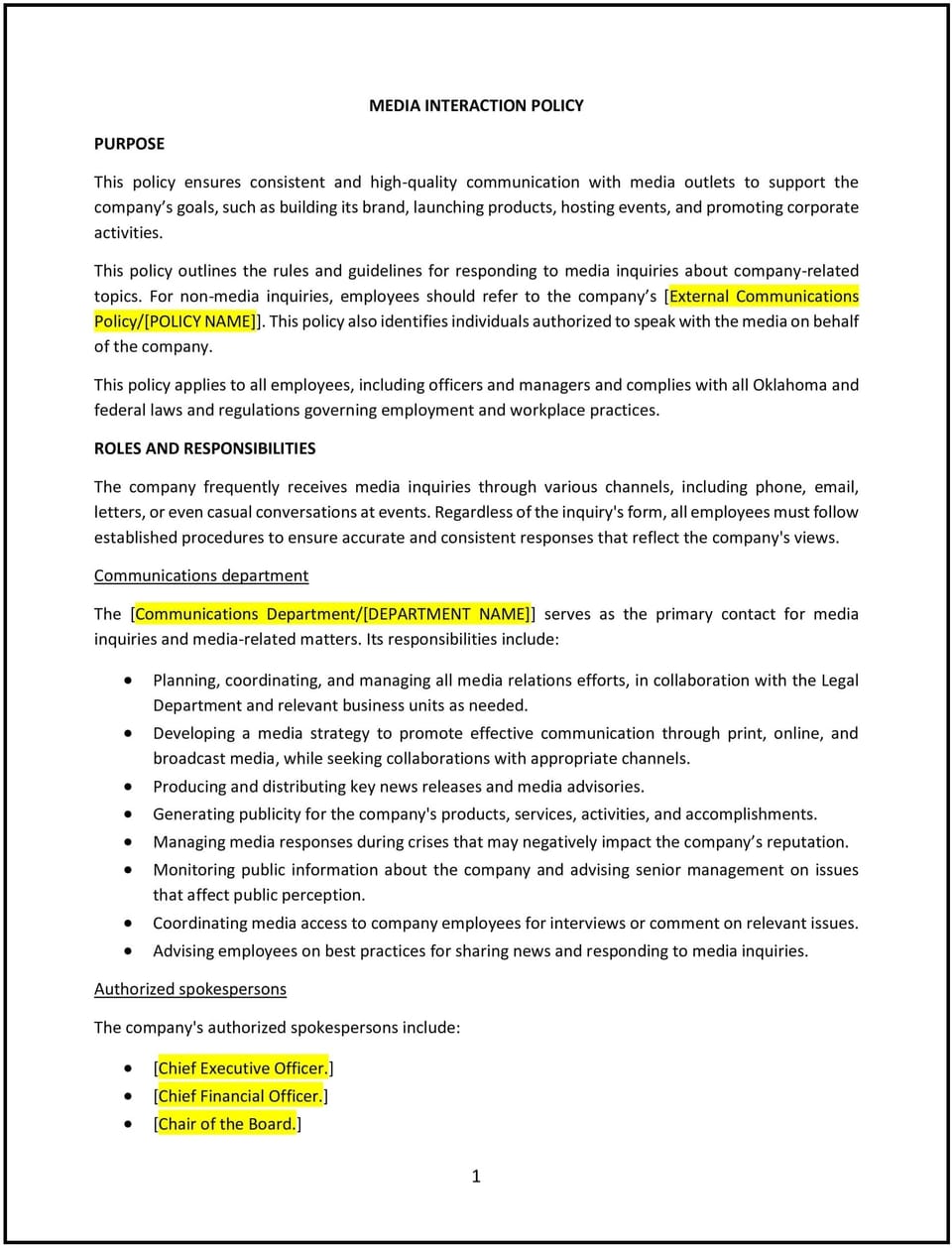Media relations policy (Oklahoma): Free template

Media relations policy (Oklahoma)
This media relations policy is designed to help Oklahoma businesses manage interactions with the media effectively and consistently. It outlines guidelines for responding to media inquiries, issuing press releases, and representing the business in public communications.
By adopting this policy, businesses can protect their reputation, ensure accurate messaging, and maintain control over public narratives.
How to use this media relations policy (Oklahoma)
- Define roles: Specify who is authorized to speak to the media on behalf of the business, such as a designated spokesperson.
- Establish procedures: Provide steps for handling media inquiries, including how to direct requests to the appropriate person.
- Outline approval processes: Describe how press releases, statements, and other communications are reviewed and approved before distribution.
- Address social media: Include guidelines for employees engaging with the media on social media platforms.
- Train employees: Educate staff on the policy and their responsibilities regarding media interactions.
- Review and update: Assess the policy annually to ensure it aligns with evolving media trends and business needs.
Benefits of using this media relations policy (Oklahoma)
This policy offers several advantages for Oklahoma businesses:
- Protects reputation: Ensures consistent and accurate messaging, reducing the risk of miscommunication or negative publicity.
- Enhances control: Maintains control over public narratives by centralizing media interactions.
- Builds trust: Demonstrates professionalism and transparency in media communications.
- Mitigates risks: Reduces the likelihood of unauthorized or inaccurate information being shared with the media.
- Fosters consistency: Provides clear guidelines for all employees, ensuring a unified approach to media relations.
Tips for using this media relations policy (Oklahoma)
- Communicate clearly: Ensure all employees understand the policy and their roles in media interactions.
- Provide training: Educate employees on handling media inquiries and representing the business professionally.
- Monitor media coverage: Track media mentions to identify trends and address potential issues proactively.
- Encourage transparency: Foster a culture where employees feel comfortable reporting media inquiries to the appropriate person.
- Update regularly: Review the policy annually to ensure it remains effective and aligned with business needs.
Q: How does this policy benefit businesses?
A: It protects the business’s reputation, enhances control over public narratives, and ensures consistent messaging.
Q: Who is authorized to speak to the media?
A: Typically, a designated spokesperson or public relations representative is authorized to speak to the media.
Q: What should employees do if they receive a media inquiry?
A: Employees should direct the inquiry to the designated spokesperson or follow the procedures outlined in the policy.
Q: How are press releases approved?
A: Press releases are typically reviewed and approved by senior management or the communications team before distribution.
Q: How often should businesses review this policy?
A: Businesses should review the policy annually or as needed to ensure it aligns with evolving media trends and business needs.
This article contains general legal information and does not contain legal advice. Cobrief is not a law firm or a substitute for an attorney or law firm. The law is complex and changes often. For legal advice, please ask a lawyer.


